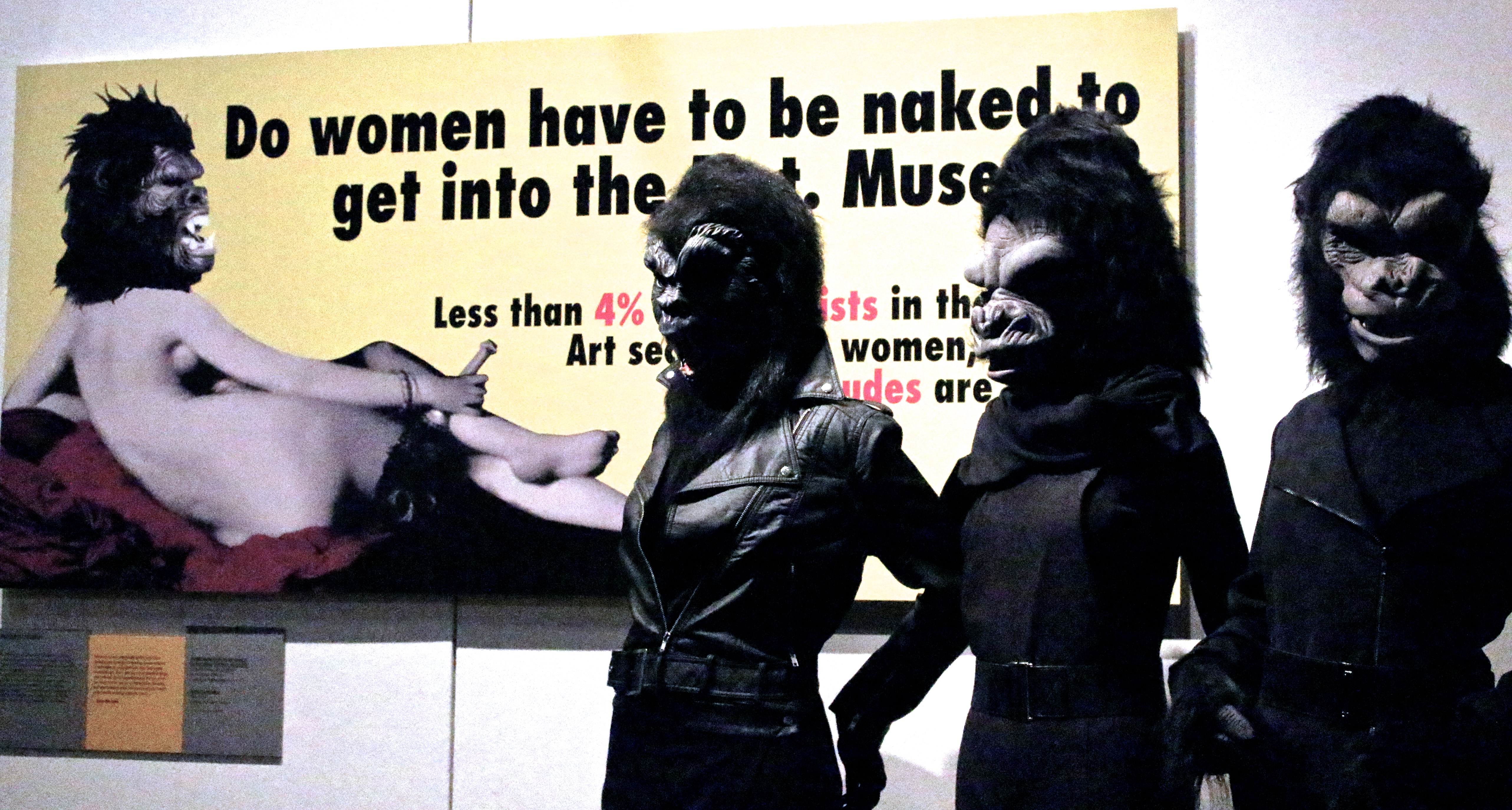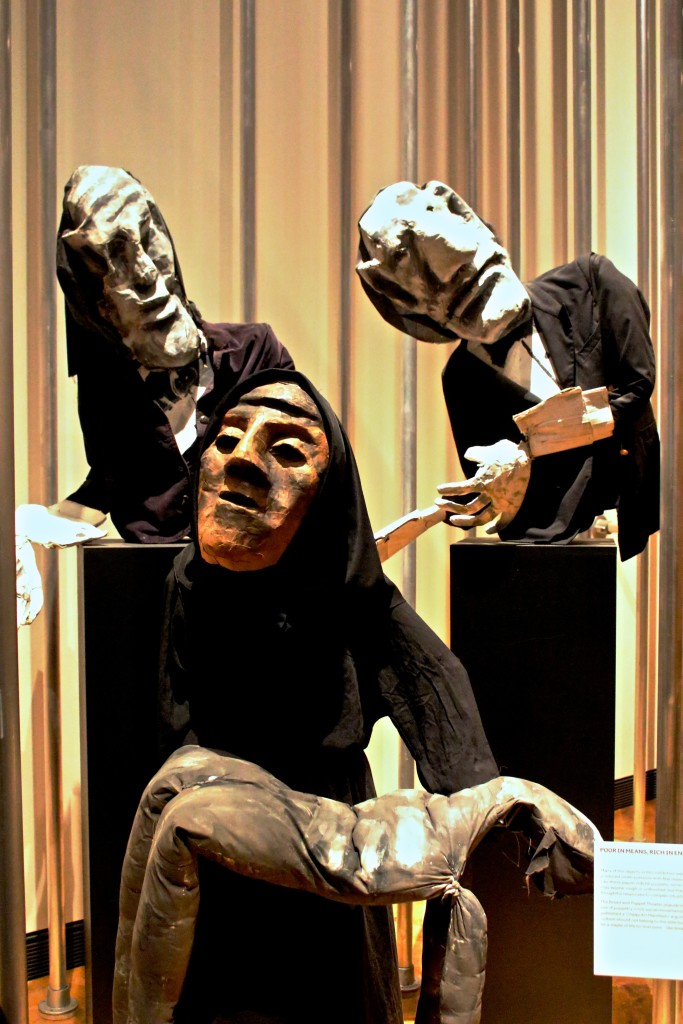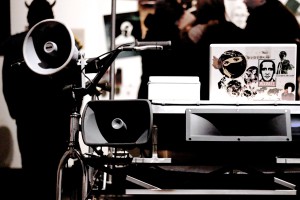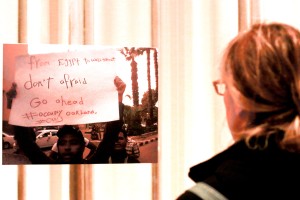Disobedient Objects, an Archeology of the people’s struggles
by Esther Carrera (words). and Chiraz Aich (pictures)
 It is the first week of January, and its back-to-work, back to reality. And, we may wonder if there is any good news? Well, there is. Till the end of the month an unusual but necessary exhibition is taking place in the V & A Museum, which I would encourage people to see.
It is the first week of January, and its back-to-work, back to reality. And, we may wonder if there is any good news? Well, there is. Till the end of the month an unusual but necessary exhibition is taking place in the V & A Museum, which I would encourage people to see.
It is called “Disobedient Objects” and it is about you and me. More than that, it is about US, the people, having a voice and leaving physical traces of our history, the history of social movements, of the different fights for a better society. Through different objects, the curators draw us in to a world of materials, like the ones you could find in an archaeological site, that tell us about where the social protest movements have taken place, what they have stood for or how many different ways the status quo can be questioned and confronted.
 These are the objects that give witness to people’s struggles, voices, opinions and beliefs, such as non-violence, resistance, solidarity, and creativity… In fact, they are the kind of artifacts an archaeologist, as a social scientist, would love to discover! In my case, I was equally pleased to find both familiar and unexpected ways people have created placards and shields, leaflets or a bucket pamphlet bomb. In the same manner, it was fantastic to recall the way protesters made fun of the wards-of-the-social-peace with such an inoffensive tool as the orange dwarf hats.
These are the objects that give witness to people’s struggles, voices, opinions and beliefs, such as non-violence, resistance, solidarity, and creativity… In fact, they are the kind of artifacts an archaeologist, as a social scientist, would love to discover! In my case, I was equally pleased to find both familiar and unexpected ways people have created placards and shields, leaflets or a bucket pamphlet bomb. In the same manner, it was fantastic to recall the way protesters made fun of the wards-of-the-social-peace with such an inoffensive tool as the orange dwarf hats.
A diversity of anger
In a nutshell, it was great to learn more about the history and the diversity of ways of communicating our social anger, frustration and hopes, as well as the ways of challenging the society with not only words but actions, like the Occupy movement or the actions of the Platform for Mortgage Debt Victims (PAH) in Spain.
All sorts of social struggles are shown in this exhibition, the majority of them covering the period since the 1980s to our present day. As it is represented in a diachronic global map, this period has been the most prolific in protests. Nevertheless, the exhibition makes reference of social movements of the 60s and 70s and before. These include the pink triangle logo for the Gay Pride, the Guerrilla Girls artworks, and the banner for the “Right to Strike” of 1976 which was supporting ethnic minority strikers in London.
 However, I would also like to highlight the relevance of what is missing from any exhibition, what are the objects that have been chosen and how are they presented? I am not going to analyze it here, in order to let you discover it by yourselves.
However, I would also like to highlight the relevance of what is missing from any exhibition, what are the objects that have been chosen and how are they presented? I am not going to analyze it here, in order to let you discover it by yourselves.
However, I am going to refer you to a curious advert at the entrance, warning us “This exhibition includes material of an explicit nature which may not be suitable for all visitors. It also contains traumatic material which some visitors may find upsetting“.
With such a warning, I expected to find the kind of objects that really scare me, such as the “anti”-disobedient objects used by the so-called forces of social order (i.e., rubber bullets or water cannons that have caused loss of sight or death that are really upsetting to me). But there was no such a thing… I wonder why.
 Nonetheless, this exhibition is really worth-seeing. You will have fun. And more than that: The false idea of happiness through increasing our individualistic consumerism during Xmas time has the chance to be replaced by a more rewarding feeling of belonging to a community (I really felt it when I saw the exhibition room so over-crowded!), which for many of us is a truer way to approach happiness… and, incidentally, contribute to making it a better world.
Nonetheless, this exhibition is really worth-seeing. You will have fun. And more than that: The false idea of happiness through increasing our individualistic consumerism during Xmas time has the chance to be replaced by a more rewarding feeling of belonging to a community (I really felt it when I saw the exhibition room so over-crowded!), which for many of us is a truer way to approach happiness… and, incidentally, contribute to making it a better world.
Because the objects without THE PEOPLE are nothing, I give thanks to the V & A Museum who hosted it, and to the artists and the protesters who make it possible … Don’t miss it, be part of it and post your comments!


Join the discussion